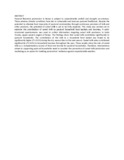Role of camel milk in pastoral livelihoods in Kenya: contribution to household diet and income

View/
Date
2016Author
Nyariki, Dickson M.
Wasonga, Oliver V.
Elhadi, Yazan A.
Metadata
Show full item recordAbstract
Pastoral livestock production in Kenya is subject to unpredictable rainfall and drought occurrences.
These adverse climatic conditions have led to vulnerable and insecure pastoral livelihoods. Despite the
potential to alleviate food insecurity of pastoral communities through continuous provision of milk and
other products, the potential of camel milk is yet to be fully explored. This study was carried out to
examine the contribution of camel milk to pastoral household food baskets and incomes. A semistructured
questionnaire was used to collect information targeting camel milk producers in Isiolo
County, upper eastern region of Kenya. The findings show that camel milk contributes significantly to
pastoral households. The contribution of the milk to a household food basket was found to be
significantly higher (P ≤ 0.05) during the dry season than in the wet season. Camel milk sales contributed
significantly (P ≤ 0.05) to household incomes throughout the year. These results show the role of camel
milk as a complementary source of food and income for pastoral households. Therefore, interventions
aimed at supporting pastoral households need to consider the promotion of camel milk production and
marketing as an option for building pastoralists’ resilience against unpredictable weather.
Collections
- Journal Articles (BE) [350]
